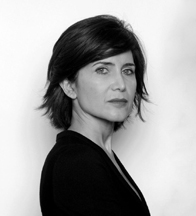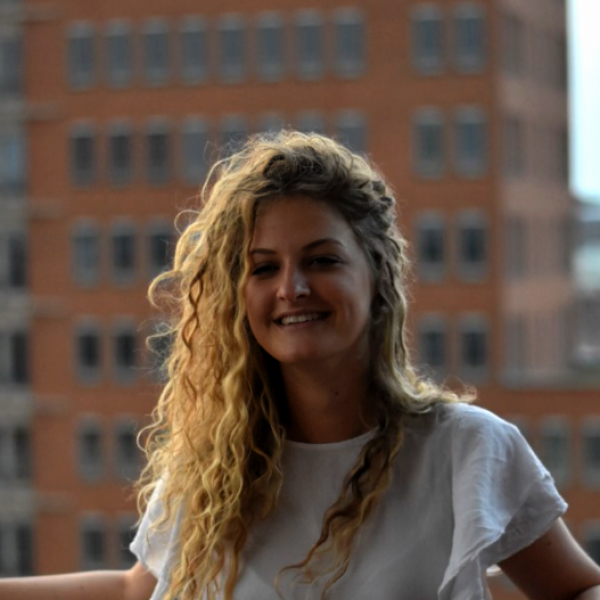Art Movements
Homework Help & Tutoring
We offer an array of different online Art Movements tutors, all of whom are advanced in their fields and highly qualified to instruct you.
Art Movements
Neoclassicism
The Neoclassical art movement started in Rome in the middle of the 18th century and quickly spread throughout Europe. It was a style inspired by the classical art of ancient Greece and Rome, which is where its name came from (neoclassicism means new classical). In a way, it was a response to the previous Rococo style, which was rather superficial and considered the art of rich people. The only subjects of a Rococo painting would have been royalty and aristocracy, usually depicted as having fun and painted in a very light and airy fashion. Neoclassical art was a stark contrast to that, especially evident in France because the birth of Neoclassicism coincided with the French Revolution, which meant that people no longer wanted art to portray only the nobility. The birth of Neoclassicism also saw the Industrial Revolution.
Neoclassical art usually deals with ancient Greek and Roman subject matter. This is very obvious even if you don't know what a piece of art is supposed to be depicted because of the presence of ancient Roman and Greek architecture and fashion. The people in a Neoclassical painting will also have classical proportions and be very idealized. Another characteristic of Neoclassical art is that it tends to be very theatrical and unrealistic. The emotions of any characters are usually shown in a very exaggerated manner. For example, in the Death of Socrates we can see his various friends and disciples around him about to witness his death, but the way that they show their grief has a very unnatural feel. There's a person banging his head against a wall and people throwing their arms up in the air. It all has a very theatrical effect. Another important characteristic of a Neoclassical painting is that there are usually very clear and defined lines, you can clearly tell where everything begins and ends. The foreground and the background are also usually separated. The defined diagonals of Neoclassical art were, in a way, supposed to represent reason and order, which were the two things valued at that time due to the Enlightenment and the Industrial Revolution.
Some critics consider French Neoclassical art to have the hidden message of a “call to arms” in the French Revolution. For example, let's look at the Oath of the Horatii by David. The scene shown in the painting is based on a Roman legend about a dispute between the cities of Rome and Alba. The two cities have decided to end the dispute by sending three young men from each city to fight each other, the Horatii brothers of Rome and the Curatii brothers of Alba. The last man standing is a winner for his city. The painting shows the three Horatii brothers of Rome giving an oath to their father that they'll fight to the death. This was a painting actually commissioned by the king's assistant d'Angivillier and was supposed to promote loyalty to the state and king. But there is reason to believe that the painting was supposed to call on people to join the fight against the monarchy, or in other words, join the revolution. One of the main reasons for believing this is the fact that David was good friends with Marat, a Jacobin journalist. In fact, another one of David's famous paintings is called The Death of Marat, which shows Marat after he was stabbed by Charlotte Corday, a sympathizer of the Girondins. This painting was also seen as a call to arms because it portrayed Marat as a martyr, meaning that if you died for the cause of the revolution you would become one too.
Neoclassical art, despite being based on ancient Greece and Rome, walked hand in hand with the times. Contemporary events shown in a classical style were another important aspect of Neoclassical art. Just like the big events of the time were a response to the previous lifestyle, Neoclassicism was a response to the previous art style, Rococo. The next art movement in line, Romanticism, followed the pattern and strove to be as different as possible from Neoclassicism.
Impressionism
A significant number of the world's most well-known artists were Impressionists. Practically everybody has heard of Monet, Renoir, Degas, Manet, and van Gogh. These are just a few of the many Impressionist artists whose art and names have become famous. The name 'Impressionism' was first coined by the Realists, who used it to describe Monet's Impression, Sunrise. They meant it as an insult to this new generation of artists who were painting in such a new and “scandalous” way. The name was supposed to refer to the fact that Impressionists painted their impressions of things, rather than the mirror image, like the Realists were doing.
Impressionism began towards the end of the 19th century. The invention of photography helped greatly with its emergence. Before photography was invented, art was used in its place. People used it as a way to capture special moments in their lives, like a new born child or a wedding. Or else it was purely religious and usually commissioned by the church. But with the invention of photography, the popularity of art decreased. What had to be done in a lot of days and through hard work could now be done in a matter of minutes, and usually turn out much more life-like. Artists realized this and came up with a new way to paint. Impressionism was not about being realistic and getting every little detail down. It was about catching the effects of light and motion. Impressionist art was often smudgy and the people in it appeared to be in the middle of movement, but that was the point, to catch fleeting moments.
Tube paint was another invention that did a lot for Impressionism. Now, artists could take their palettes and canvases outside to paint. That became known as painting “en plein air”, meaning outside and in one sitting. Before tube paint, artists that wanted to paint something that was outside had to sketch it and then go inside to paint it. This new invention also made artists more spontaneous, both in their color choices and because they stopped sketching before painting. An artist who didn't conform to the norm and painted mostly inside was Degas. A subject that he was really fond of was ballerinas, and painting them required him to be inside.
Impressionism was a huge step forward for art, leading it into new and unexplored territory. Its emergence is due to the many inventions that were happening during that time period. Post-Impressionism, which is the next artistic movement, is similar but has its differences.
Art Deco
Art Deco is a visual arts style that started in France just before the outbreak of World War I. Its popularity reached its peak in the 1920s, 30s and 40s and eventually died out after World War II, although it did revive for a while in the 60s. It often gets confused with Art Nouveau, and while they may appear similar, there are some substantial differences in the two art types. Art Deco uses bold colours and is characterized by geometric shapes and symmetry, whereas Art Nouveau is generally softer and has a flower and nature motif.
Unlike many previous art movements, Art Deco has no philosophical background. It didn't come about because of any social issues or changes in culture. To be honest, it kind of just happened. But what made it really interesting is that it used a whole mixture of different styles as its basis. Those styles were: Art Nouveau, Cubism, Constructivism, Futurism, Fauvism and even Aztec, Egyptian and Classical Antiquity art. Art Deco wasn't just about visual art, it was also heavily employed in architecture, like for example in the famous Chrysler building.
Art Deco architecture was supposed to symbolize technological and scientific progress, with its straight, clear lines and symmetry. The shapes most often used in Art Deco buildings were either triangular, trapezoidal or zigzagged. All of this was seen as very modern and representative of the time. The materials used also added to the modernity of Art Deco, they were most often steel, aluminum and plastic, as well as many others. Art Deco was also frequently used in poster art, textiles, fashion, jewellery, furniture and even things such as clocks, automobiles, radios, telephones and more. It was also used in paintings, but not that often. Paintings are often very hard to pin down as being completely Art Deco because at that time many similar painting styles, like cubism, were just as popular and were often employed by famous artists.
A slightly different form of Art Deco architecture, called Art Moderne or Streamline Moderne, appeared in the 1930s. It was largely a product of the war. Art Deco was beginning to be seen as too lavish and elaborate for the times and a new and more practical style was born. Instead of using stained glass or exotic woods, like in Art Deco, plain glass and cement were often used. Art Moderne has many characteristics similar to Art Deco, but the advocates of this new style accused Art Deco of being fake. Streamline Moderne often used curving forms and nautical elements, like porthole windows. An example of an Art Moderne building would be the Normandie Hotel in San Juan, Puerto Rico. It was inspired by the SS Normandie.
Romanticism
Romanticism was an artistic, literary, and intellectual movement that followed Neoclassicism. It began at the end of the 18th century and died out towards the 1850s. As the name suggests, Romanticism revolved around romantic themes and ideas. Unlike Neoclassicism, which was very no-nonsense and structured, Romanticism was often obscure and dealt with mythical subject matter. The role of a victim was also very important in Romantic artwork.
Romanticism was a product of the discontent felt by some people in regard to the industrial revolution and all the modernization that was happening. Unlike Neoclassical artists, who tried to incorporate elements of industrialization in their art, Romantics incorporated medieval themes, mythology, nature, insanity and exotic subject matter. In essence, they included anything that they felt was being forgotten or ignored in the new era. A good example is The Nightmare by Henry Fuseli. To begin with, it shows an incubus, which is a mythological creature. The incubus was a demon who in medieval folklore was believed to visit sleeping women, the horse was probably its companion. A more practical approach to the painting is that it is a portrayal of sleep paralysis, with the incubus sitting on the woman's chest symbolizing the inability to get up or move and the horse representing an hallucination. Another element of Romanticism that Fuseli employs in The Nightmare is chiaroscuro, which is a stark contrast between light and dark.
Romantics also often painted contemporary events in a slightly dramatic way; for example The Raft of the Medusa by Theodore Gericault. In 1816 a French ship called the Meduse crashed on the West coast of Africa. As there weren't enough lifeboats, a raft was built for the remaining 149 survivors. The raft was tied to a lifeboat, but after 12 miles the rope was cut because the people on the lifeboat thought that the raft was slowing them down. The raft was spotted by another ship 13 days later. Gericault painted the people on the raft in a pyramid of sorts. The people at the bottom of the pyramid portray despair and insanity and the people towards the top show more hope. Thus, we can see the Romantic themes of madness and also of the exotic because the people on the raft were on a trip to foreign lands.
A prominent Romantic artist who painted in a totally new and unusual way was Francisco Goya. Two of his most famous painting are Third of May 1808, which portrays an incident that happened during Napoleon's occupation of Spain, and Saturn Devouring his Son, which shows the Roman mythological character Saturn (Cronus in Greek mythology) devouring his own son. Goya painted in a completely unconventional way at the time, using messy strokes and not giving much attention to proportion or detail.
Romanticism was a rebellion against the previous artistic movement. It was characterized by discarding the ideals of Neoclassicism. Romantic artists tried to incorporate everything that was previously considered to be unpopular.
To fulfill our tutoring mission of online education, our college homework help and online tutoring centers are standing by 24/7, ready to assist college students who need homework help with all aspects of art movements. Our art tutors can help with all your projects, large or small, and we challenge you to find better art movements tutoring anywhere.
College Art Movements Homework Help
Since we have tutors in all Art Movements related topics, we can provide a range of different services. Our online Art Movements tutors will:
- Provide specific insight for homework assignments.
- Review broad conceptual ideas and chapters.
- Simplify complex topics into digestible pieces of information.
- Answer any Art Movements related questions.
- Tailor instruction to fit your style of learning.
With these capabilities, our college Art Movements tutors will give you the tools you need to gain a comprehensive knowledge of Art Movements you can use in future courses.
24HourAnswers Online Art Movements Tutors
Our tutors are just as dedicated to your success in class as you are, so they are available around the clock to assist you with questions, homework, exam preparation and any Art Movements related assignments you need extra help completing.
In addition to gaining access to highly qualified tutors, you'll also strengthen your confidence level in the classroom when you work with us. This newfound confidence will allow you to apply your Art Movements knowledge in future courses and keep your education progressing smoothly.
Because our college Art Movements tutors are fully remote, seeking their help is easy. Rather than spend valuable time trying to find a local Art Movements tutor you can trust, just call on our tutors whenever you need them without any conflicting schedules getting in the way.




